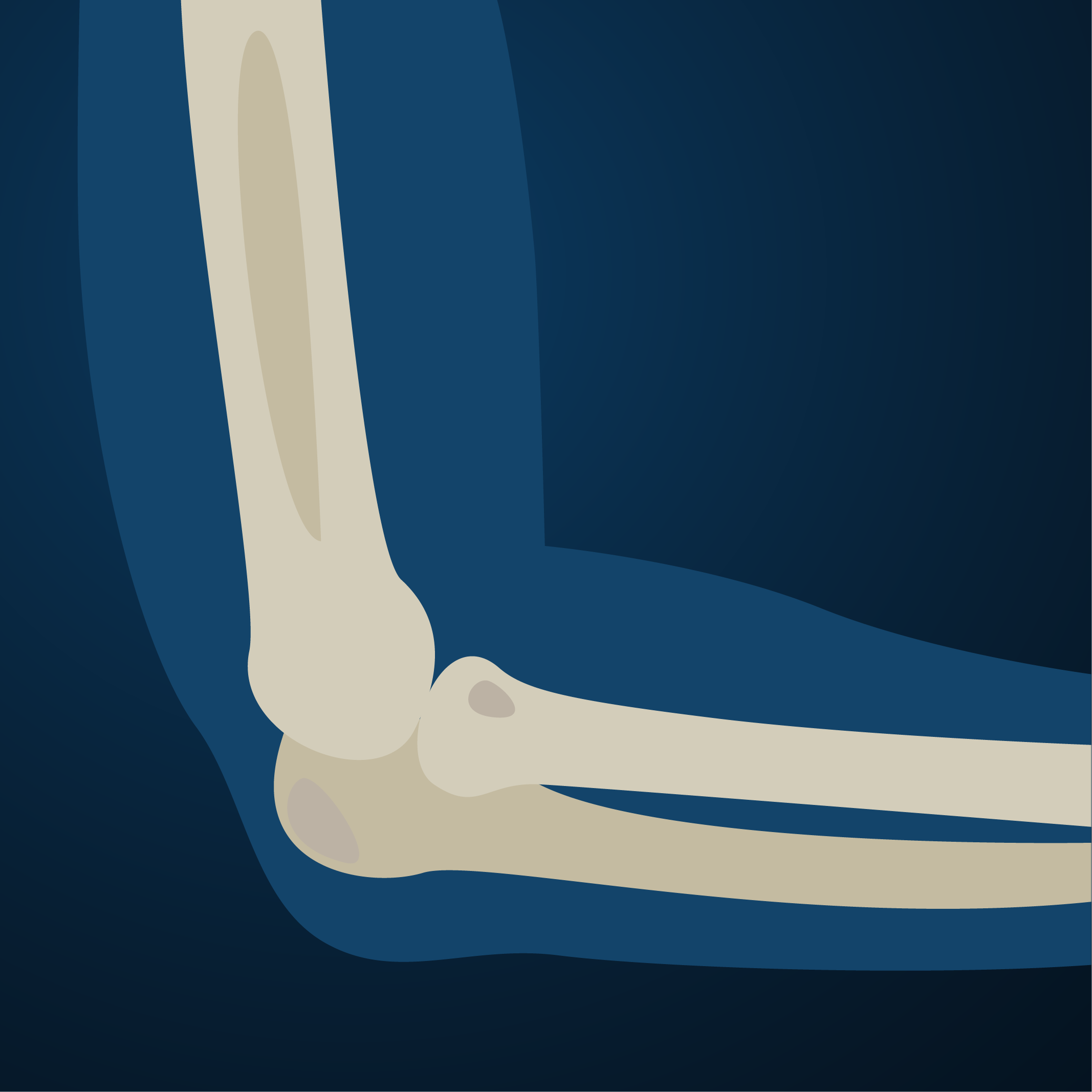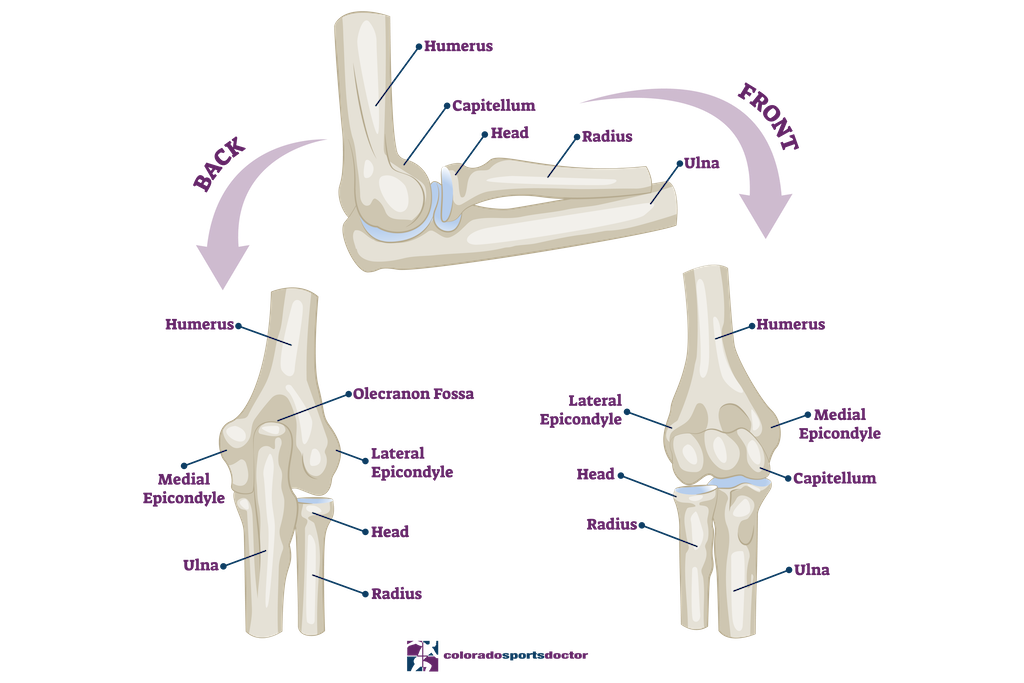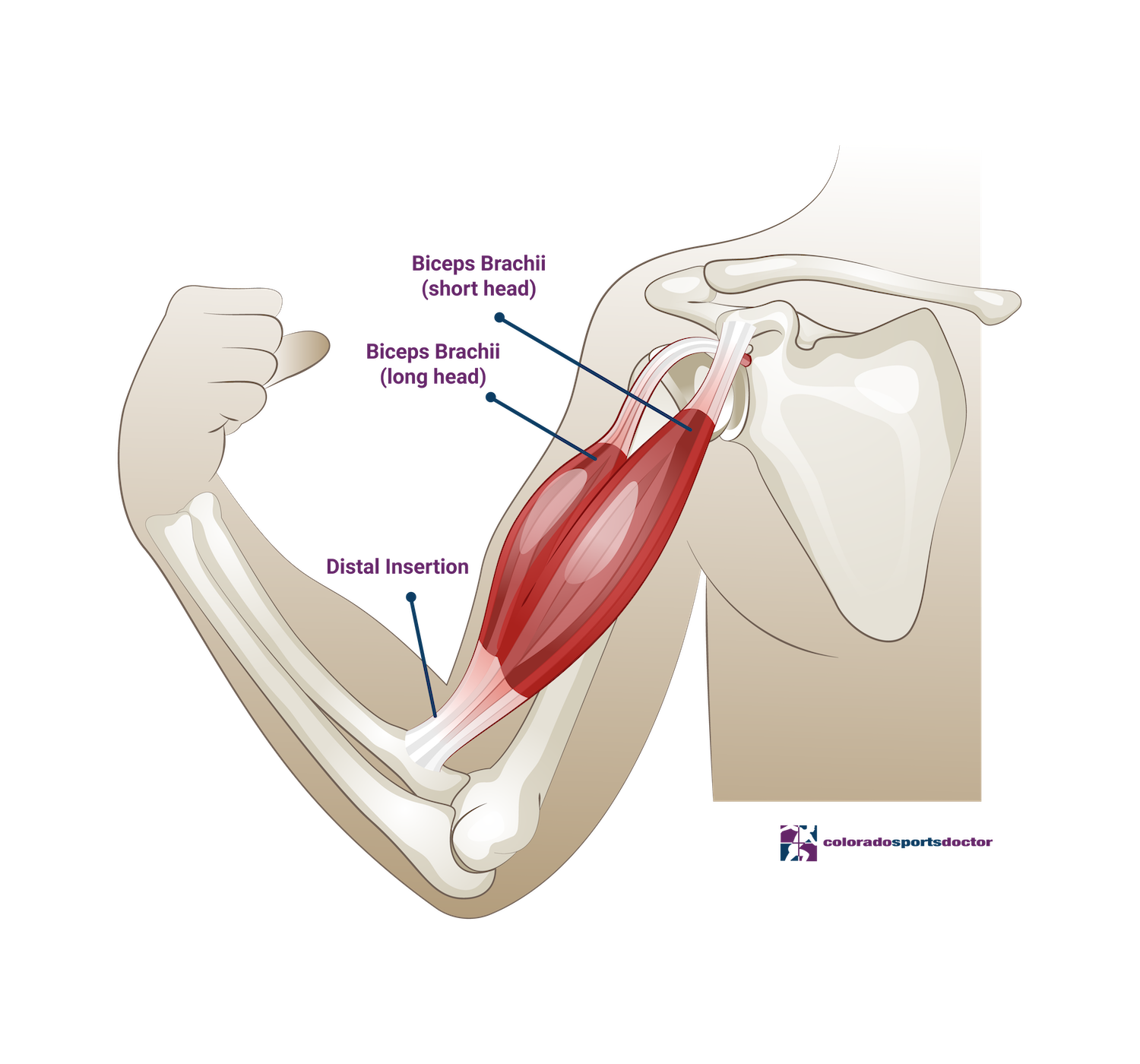
Elbow Anatomy, Injuries, & Treatment
It is often difficult for patients to have all the information they need to understand the symptoms and challenges they are facing. It is helpful to consider elbow anatomy, injuries, and treatment for these conditions.
Elbow Anatomy

The elbow is a joint that connects the upper arm bone, called the humerus, and two lower arm bones, called the radius and ulna. It is a complex joint that allows for flexion and extension of the arm and rotation of the forearm. Several essential structures, including ligaments, tendons, and muscles, surround the joint. The medial collateral ligament (MCL) and the lateral collateral ligament (LCL) help stabilize the elbow joint. The combined action of the common flexor and extensor tendons and the biceps and triceps muscles enables joint movement.
The elbow joint bones are covered in hyaline cartilage, which helps cushion the joint and facilitate smooth movement. The synovial membrane lines the joint and produces synovial fluid, which helps to lubricate the joint and reduce friction. Common injuries to the elbow joint include fractures, dislocations, and ligament sprains. Depending on the severity of the injury, treatment for these injuries may include physical therapy, rest, or surgery.
Injuries
The majority of injuries to the elbow are the result of trauma. This can be a single traumatic event such as a high energy fall or from chronic repetitive overuse. The elbow is very sensitive to injury and does not tolerate prolonged immobilization. It typically can develop stiffness and loss of motion with prolonged immobilization. Therefore, our goal is to get it moving as soon as possible, even with very severe injuries.
Fractures
These most often result from a traumatic force being placed on the elbow. This can be from a fall on an outstretched hand or directly landing on the elbow.
Radial Head Fractures – Radial Head Fractures – These most often result from a fall on an outstretched hand. The majority of these fractures are treated with short term immobilization (a few days to two weeks) followed by early mobilization and physical therapy. A small percentage of these fractures require surgery to repair, and is typically only required if there is significant displacement.
Olecranon Fractures – This is a fracture of the “tip” of the elbow and occurs from a direct blow to the elbow. These fractures almost always require surgery to repair.
Dislocations
Elbow dislocations typically result from a fall on an outstretched hand that results in hyperextension of the elbow. Dislocations are typically treated with relocation under sedation followed by a couple of weeks of immobilization in a hinged brace.
Mobilization is then started gradually increasing extension over a period of weeks. This is supervised by a physical therapist and your doctor. These injuries do very well and rarely require surgery.
Lateral and Medial Epicondylitis
These very common conditions are referred to as “Tennis Elbow” and “Golfer’s Elbow”. They are the result of chronic repetitive injury to the extensor or flexor tendons of the wrist that attach on the lateral(outside) or medial(inside) of the elbow. Patients present with complaints of pain with lifting weighted objects or with extending or flexing the wrist.
Historically, physicians have given steroid injections for this problem, but we know from the orthopedic literature that these injections provide no long term benefit and can actually harm the tendon and cause long term problems. When this problem is persistent, surgery was recommended to “repair” the tendon. Currently, there are better non-operative options.
Distal Biceps Tendon Rupture

The biceps tendon attaches to the radial tuberosity just distal to the elbow joint. The biceps muscle’s primary responsibility supination of the forearm (turning palm up), but it is also a secondary flexor of the elbow.
The brachialis is the primary flexor of the elbow. A distal biceps rupture results from forced extension of an elbow from a nearly extended elbow against the force of a fully contracted biceps. Patients will usually feel a “pop” and develop bruising on the medial forearm. These tears require surgical repair in order to heal.
They can be treated non-surgically but will result in significant supination and elbow flexion weakness.
Watch Dr. Jones performing distal biceps tendon tear repair
This video has been viewed by thousands of surgeons in order to learn Dr. Jones’ technique. It was uploaded to an orthopedic surgeon continuing education site, Orthobullets, and surgeons who watched it received continuing education credits.
Arthritis and Loose Bodies
Patients can develop arthritis or loose bodies in the elbow after suffering a traumatic injury (fracture or dislocation). Arthritic elbows are rarely symptomatic unless they develop significant loss of motion.
However, they can develop loose bodies that float around the elbow and intermittently cause locking and pain. This is the primary indication for elbow arthroscopy. Arthroscopy is a minimally invasive procedure that involves several 5mm incisions that allows the surgeon to insert a viewing scope and instruments into the joint.
The scope allows the surgeon to visualize the joint, clean up arthritis, and remove the loose bodies. This is a fairly quick procedure and the recovery is predictably quick.
The elbow is a complex system made up of bone, cartilage, ligaments, and fluid. In an active lifestyle, this complex system can get jarred by wear and tear as well as traumatic events. To help you keep you active and moving forward, the Colorado Springs sports doctor Chris Jones MD demonstrates expertise and excellent medical practices honed by years of surgical and medical training.
Among the variety of elbow injuries in which Dr. Jones specializes are:
Elbow Treatments
We offer both non-surgical and surgical treatments that address a variety of elbow injuries that result in elbow pain.
Non-Surgical Treatments
Include conservative measures such as rest, use of ice, anti-inflammatory medications, or gentle stretching and strengthening. If needed, patients will be referred to physical therapy or, when severe symptoms do not respond to conservative measures, cortisone injections might be recommended.
Surgical Treatments
If non-operative measures fail, Dr. Jones will discuss your options with you and make the best recommendation based on your personal situation. To learn more about the injuries we treat, check our Injuries page.
"*" indicates required fields
Our Location
Dr. Christopher K. Jones, MD
4110 Briargate Parkway #300
Colorado Springs, Colorado 80920
Hours
Monday: 9am-5pm
Thursday 9am-5pm
Friday 9am-5pm
